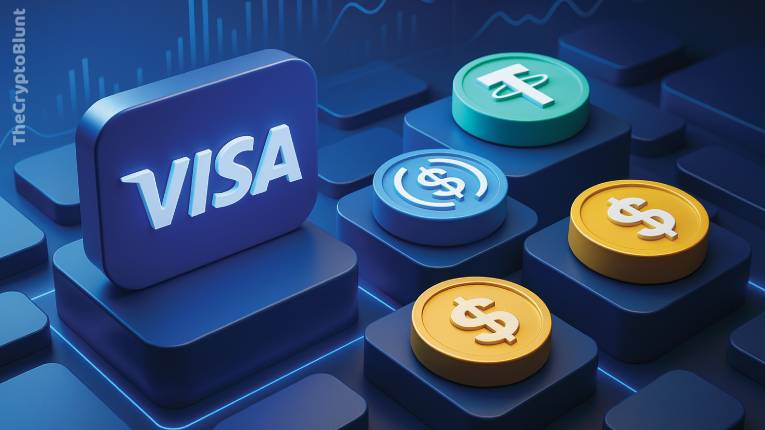The future of finance is being supercharged by Visa through an expansion of stablecoin settlements, which will involve new digital assets and blockchains, thereby unlocking a new era of global crypto payments.
Visa Expands Stablecoin Network, Adds Euro Integration and New Blockchains
On July 31, it was announced by payments giant Visa that its stablecoin settlement infrastructure would be expanded to include more digital currencies and blockchain networks. This move is aimed at scaling global payment capabilities. The company has confirmed:
Visa’s settlement platform is adding support for two additional USD-backed stablecoins, two blockchains and the euro-backed EURC.
New additions have been made to Visa’s stablecoin settlement infrastructure, including the dollar-pegged Global Dollar (USDG) and Paypal USD (PYUSD) through a partnership with Paxos, along with Circle’s euro-backed EURC. Stellar and Avalanche have also been added to the list of supported blockchains, joining Ethereum and Solana.
USD Coin (USDC) is also supported by Visa. On March 29, 2021, a pilot program was launched by the payments giant to settle transactions using USDC on the Ethereum blockchain, beginning with Crypto.com. This initiative established Visa as a pioneer in integrating stablecoins for payment settlement, with the goal of modernizing its global payment network and streamlining cross-border money movement.
By diversifying both its digital asset and blockchain exposure, Visa now enables transactions with four different stablecoins across four blockchain ecosystems. This development is part of the company’s broader push to provide seamless interoperability and settlement flexibility for both crypto-native and traditional payment platforms. The firm’s long-term commitment to supporting digital currencies at scale was emphasized by Rubail Birwadker, Visa’s Global Head of Growth Products and Strategic Partnerships.
As new stablecoins and blockchains continue to emerge and show promise of true utility, Visa’s mission remains clear: build the interoperable layer designed to make stablecoin payments work at scale just as our traditional payments have worked – securely, reliably and globally.
Additionally, Visa stated:
By supporting both USD and EUR-backed stablecoins, participating partners are now able to utilize blockchain infrastructure for multi-currency settlement. This strategy complements an existing network that already facilitates settlement in over 25 fiat currencies. While concerns about regulatory clarity and digital asset volatility continue to be raised by some observers, proponents argue that stablecoins—when backed by trusted platforms and deployed at scale—could significantly improve cross-border and on-chain payments.
















